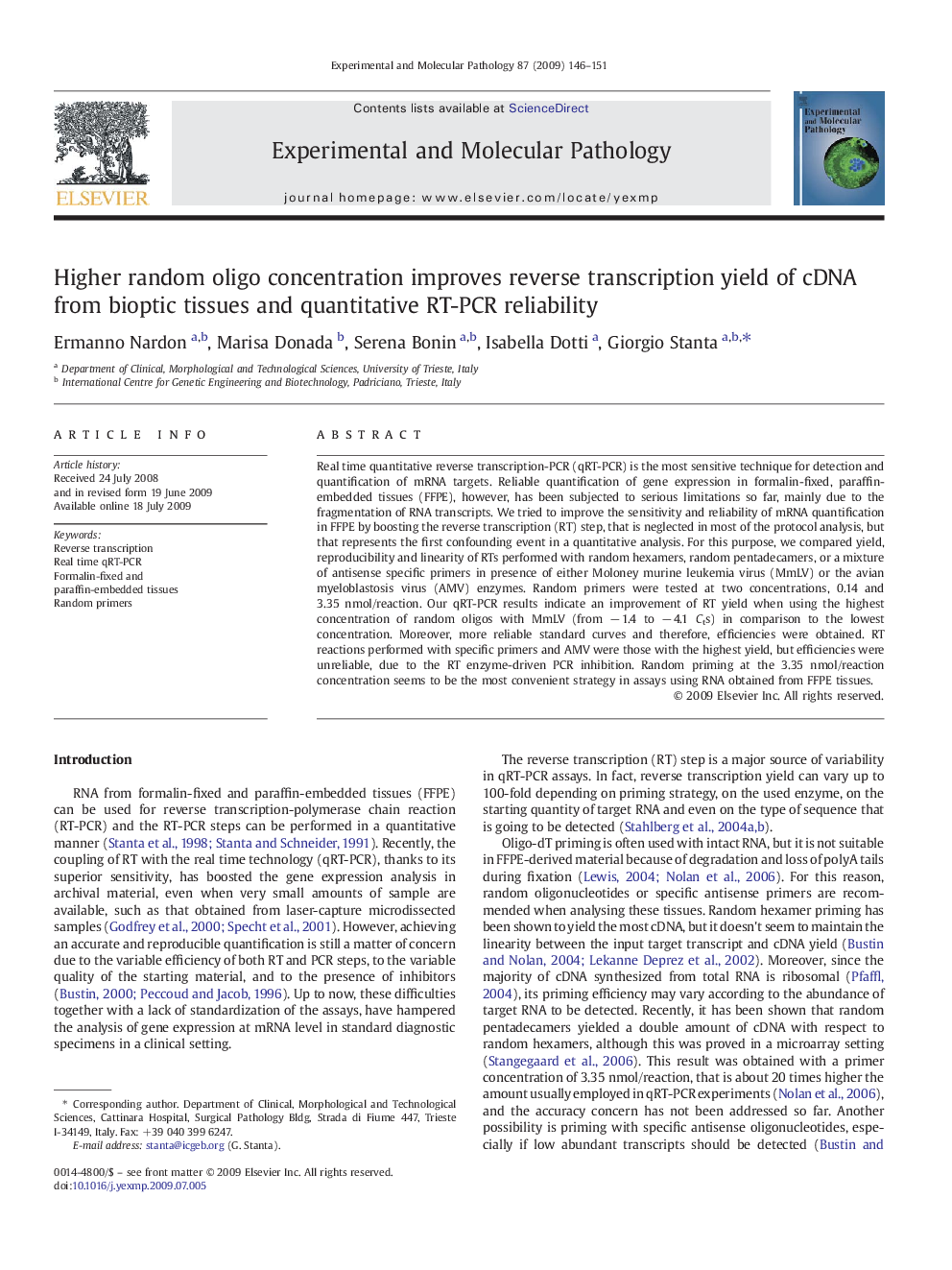| Article ID | Journal | Published Year | Pages | File Type |
|---|---|---|---|---|
| 2775676 | Experimental and Molecular Pathology | 2009 | 6 Pages |
Real time quantitative reverse transcription-PCR (qRT-PCR) is the most sensitive technique for detection and quantification of mRNA targets. Reliable quantification of gene expression in formalin-fixed, paraffin-embedded tissues (FFPE), however, has been subjected to serious limitations so far, mainly due to the fragmentation of RNA transcripts. We tried to improve the sensitivity and reliability of mRNA quantification in FFPE by boosting the reverse transcription (RT) step, that is neglected in most of the protocol analysis, but that represents the first confounding event in a quantitative analysis. For this purpose, we compared yield, reproducibility and linearity of RTs performed with random hexamers, random pentadecamers, or a mixture of antisense specific primers in presence of either Moloney murine leukemia virus (MmLV) or the avian myeloblastosis virus (AMV) enzymes. Random primers were tested at two concentrations, 0.14 and 3.35 nmol/reaction. Our qRT-PCR results indicate an improvement of RT yield when using the highest concentration of random oligos with MmLV (from − 1.4 to − 4.1 Cts) in comparison to the lowest concentration. Moreover, more reliable standard curves and therefore, efficiencies were obtained. RT reactions performed with specific primers and AMV were those with the highest yield, but efficiencies were unreliable, due to the RT enzyme-driven PCR inhibition. Random priming at the 3.35 nmol/reaction concentration seems to be the most convenient strategy in assays using RNA obtained from FFPE tissues.
